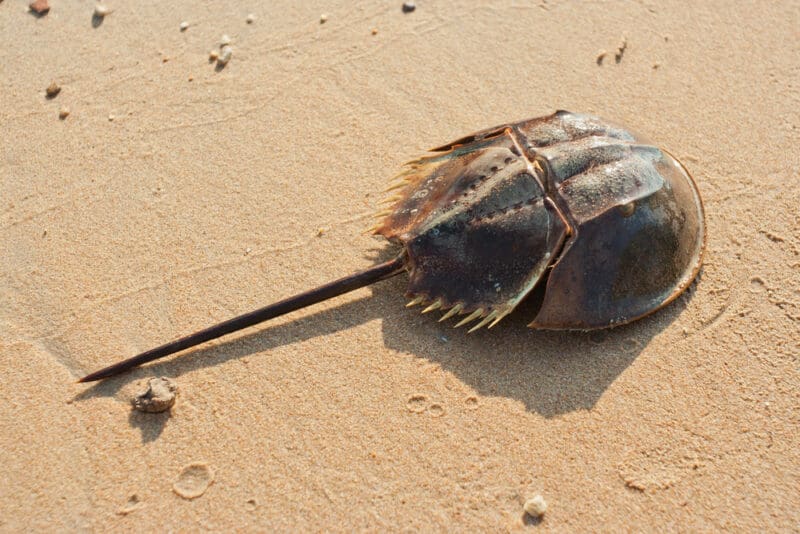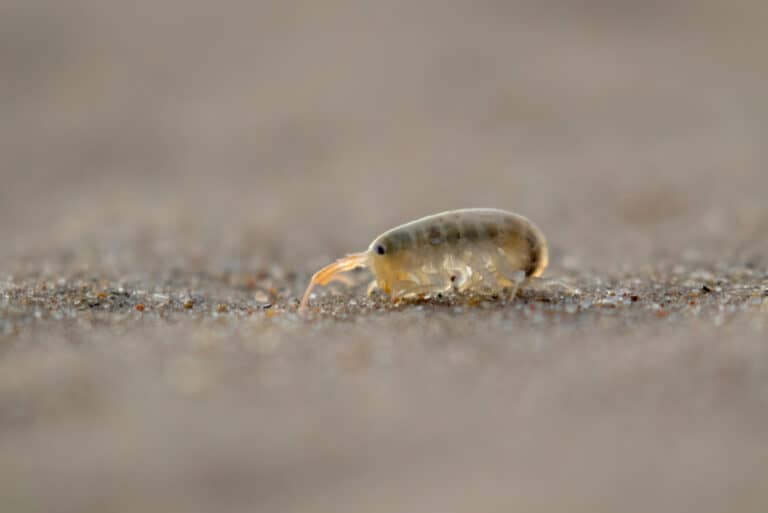Can You Eat Horseshoe Crab?

If you have ever been walking along a beach and come up on what you are sure was an alien life form, you probably just met a horseshoe crab. These sea creatures look like something straight out of a sci-fi movie. In fact, they are so wild looking that many famous TV and movie monsters were based on them.
Considering their frightful appearance, you might think no one would ever consider eating them, right? Wrong. Many people wonder if you can actually eat a horseshoe crab. In this quick guide, we will answer those questions for you as well as give you some more interesting info on this crazy sea creature.
What Is A Horseshoe Crab?
Horseshoe crabs are oddly shaped crustaceans that live in shallow waters along the coasts of South Aisa, Florida, and other parts of the Gulf of Mexico. Some scientists believe that horseshoe crabs are as old as dinosaurs. Some refer to them as “living fossils.” This is because they have not changed much in thousands of years. This is pretty impressive when you consider the rate at which marine life goes extinct.
Surprisingly, they are not actually crabs at all. They are in fact anthropods. This makes them more closely related to spiders and scorpions than to crabs.
Horseshoe crabs have a scary tail that they use for protection. They also use this appendage to turn themselves over if they get flipped. The tail is not there to attack you.
Horseshoe crabs are often found dead on beaches. Why is this? They are vulnerable to being flipped upside down by waves. Once upside down, it is difficult to turn themselves right again. If you find a horseshoe crab flipped over and still alive, you can do it a favor by gently flipping is back right carefully using a sand shovel or blunt stick.
Do People Really Eat Horseshoe Crabs?
As crazy as it sounds, yes, they do. In fact, horseshoe crab is popping up in more and more restaurants around the world. It is considered a delicacy in many Asia countries. This dish is pretty expensive and there is actually not much meat to eat on a horseshoe crab. Horseshoe crabs need to be cooked carefully to ensure there are no contaminants, though. This creature is a scavenger. That means it basically will eat anything and everything it comes in contact with.
Horseshoe crabs grab up their food with their legs and crush it if it is big. The food is then moved to its mouth.
If you encounter a horseshoe crab the first thing you will notice is its size. They can grow quite large, but there is relatively little meat on the animal. You can’t eat the entire animal, as most of it is shell.
The roe is the part of the horseshoe crab that is eaten. Some people may also eat the eggs. The roe can be different colors including green and orange. Those who eat it, claim that orange roe tastes better than green. The texture has been described as “rubbery.”
So, how is horseshoe crab cooked? Restaurants will grill, boil, or bake the entire crab. The outer shell is then peeled off, the eggs are taken out, and what’s left will be eaten by itself or on a nice salad.
You should never attempt to cook horseshoe crab on your own, or eat it raw, though. These creatures are scavengers. They could have come in contact with any type of contaminant. This could be harmful to you. Also, keep in mind that some horseshoe crabs contain toxins as well.
Are They Poisonous?
Yes, some varieties are poisonous. One poisonous type is the Mangrove Horseshoe Crab. This animal contains a dangerous neurotoxin that can be deadly to humans. People have died after eating horseshoe crab in Thailand and Cambodia. It is possible that the animals were harvested during a certain time of year in which the neurotoxin is present. More research is being conducted on when the toxins are present and if harvesting during certain seasons could increase the safety of eating these animals.
Some people are allergic to horseshoe crabs and should avoid this dish.
Horseshoe crabs and other types of seafood should always be prepared properly to avoid health risks.
Are Horseshoe Crabs Useful Other Ways?
Yes, this animal is actually quite useful in a few different ways. One of the most significant ways this creature can be used is to combat certain bacterial infections in humans. Most notably, the blue blood of the horseshoe crab is used to create serums that can combat E Coli infections in people. The blue blood of the horseshoe crab has high levels of copper which can be used to help E Coli patients.
- Bait– Fishermen also use this creature to capture other types of seafood.
- Fertilizer – Horseshoe crabs have been used since ancient times as a natural fertilizer for gardens.
- Food – Shorebirds depend on this animal as part of their diet.
- Industry – The horseshoe crabs shell is made of a material called Chitin. This substance is often used in weight loss products. It can also be used in cholesterol drugs as well.
- Cleaning – Because they are scavengers, horseshoe crabs provide an important service to their eco-system. Not only do they clean up dead things, but their constantly digging and foraging also helps to aerate the sand.
Final Thoughts
If you have ever seen a horseshoe crab, the last thing on your mind would have been, “Hey can I eat that?” But, as we have learned, yes, you actually can eat them. So, if you find a restaurant that prepares this delicacy, and you feel like paying a huge price for a tiny bit of meat that could very well contain neurotoxin, be our guest.
Most people will more likely benefit from one of the other ways that horseshoe crabs contribute to medicine and industry.
There is no doubt, however, that this crazy looking, would be alien creature, is an interesting, fascinating part of our awesome earth.
You can also read:


